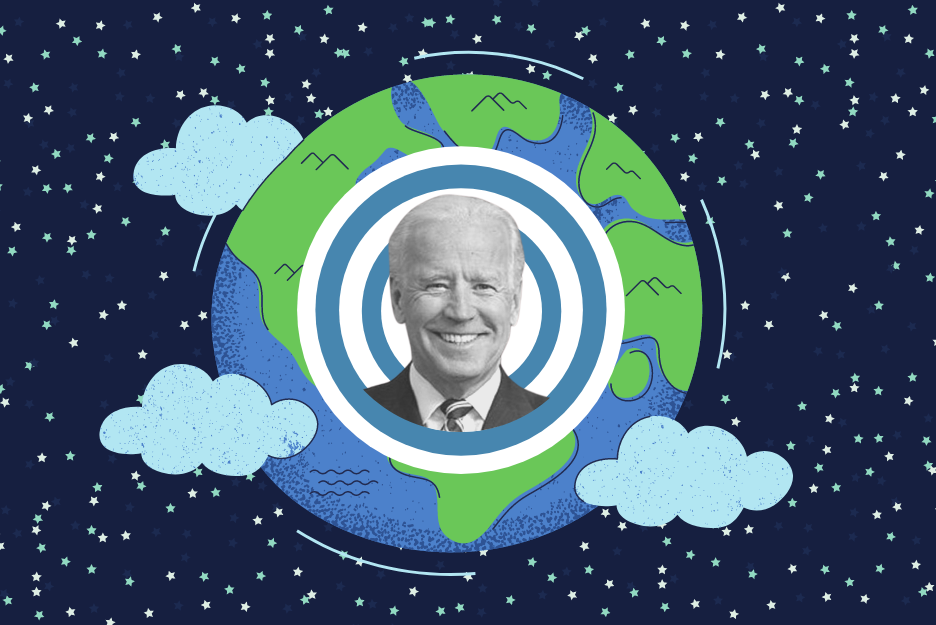
By Kyle Nguyen and Catherine Vu
Combating climate change is a major part of President-elect Joe Biden’s campaign. When inaugurated, he plans to spearhead a “Clean Energy Revolution,” outlined in the Green New Deal backed by congressional Democrats.
The main goal of the Biden Plan is for the United States to have a 100% clean economy and be carbon neutral by 2050. To do this, Biden will link the environment with the economy by investing in smart infrastructure that will be used to combat climate change. He plans to hold fossil fuel companies and major producers of pollution accountable for these goals through domestic legislation and stricter foreign policy. These goals are consolidated into five main objectives in Biden’s climate plan.
Reach zero emissions by 2050.
Shortly after assuming office, Biden plans to initiate his plan through executive orders. These include establishing methane pollution limits for all fossil fuel companies, investing in smart infrastructure, reducing transportation greenhouse gas emissions by implementing more rigid fuel economy standards, incentivizing clean energy development, requiring companies to publicly share their greenhouse gas emissions and conserving land.
In his first year, he will press Congress to pass legislation that will instate enforce environmental policies, invest in energy and climate research and development, and stimulate clean energy innovation.
Create smart infrastructure that adapts to climate change.
A 2014 study by the International Monetary Fund, an organization centered around monetary stability, “found that increasing infrastructure investment by 1% of GDP in advanced countries can raise growth by 0.4% to 1.5% and foster technological innovation,” states the Biden Plan.
Biden will work with innovators to redesign building codes to adapt to natural disasters, create new and well-paying jobs with training in climate-resilient industries and invest in a reliable railroad system. He will encourage property owners and companies to adopt these goals.
Hold other nations accountable.
Research group BloombergNEF has estimated that 2020 carbon emissions will be 9% lower than 2019 carbon emissions by the end of this year largely due to the effects of the pandemic. Authors of the study predict this decrease in emissions will help the U.S. meet its commitments in the Paris Climate Agreement, which Biden plans to rejoin.
Biden will use America’s international influence and economic power to hold other countries accountable for climate goals. For example, the Biden Administration plans to impose carbon fees and quotas on imported goods.
In the U.S., the Biden Administration will create a Clean Energy Export and Climate Investment Initiative that incentivizes American companies to offer low-carbon solutions to the global market.
Biden also plans to quadruple the original investment budget to improve and expand the global climate initiative Mission Innovation that the Obama Administration created five years ago. The goal of Mission Innovation is to study and create clean energy technology, according to its website.
The Biden Administration would also make climate change a core national security priority by creating National Intelligence Estimates on threats to national security due to climate change and build smart infrastructure for overseas U.S. military bases.
Advocate for exploited communities.
Biden will bring environmental justice and reinstate federal protections for communities of color, Indigenous lands and low-income communities that the Trump Administration removed.
His administration will crack down on corporations and people who violate environmental laws and pollute.
Help workers adapt to the clean energy transition.
Biden wants to help workers adapt to the clean energy transition by urging Congress to pass legislation protecting health and retirement benefits and pensions. For coal miners, for example, he wants to reform the health benefits system to include more health screenings for lung diseases, and to and protect the employees instead of the employer in general. Biden wants to continue to support coal and power plant communities to keep all jobs available and adequately paid.
Funding these proposals and being carbon neutral by 2050 requires a federal investment of $1.7 trillion over the next decade, which Biden says will be achieved by reversing President Trump’s tax cuts for corporations. Private sector, state and local investments will bring the total amount to over $5 trillion.
Biden may face the additional challenges of passing the extensive legislation for his climate plan through congressional Republicans. He has nominated Obama-era Secretary of State John Kerry to be the “special presidential envoy for climate” on his cabinet.
Fountain Valley High School (FVHS) students shared their thoughts on Biden’s climate plan.
“I think this is good for America because we tend to forget that the world is dying,” senior Anton Pham said. “I like the fact that we have more government intervention in climate change, although I could see this as a problem for some families.”
Biden’s plan to invest in a long term carbon-free economy and limit the use of oil and gas products has its benefits, such as cleaner air, but there are potential downsides. As we start to move toward more sustainable fuels such as electricity, the prices of vehicles and other items that relate to the plan would go up substantially, Green Car Reports writes.
“Ideally that’s a great idea you know, saving the planet and all but in practice I don’t see it being possible because electric cars are expensive so it’s inherently unfair,” senior Taylor Williams said.





